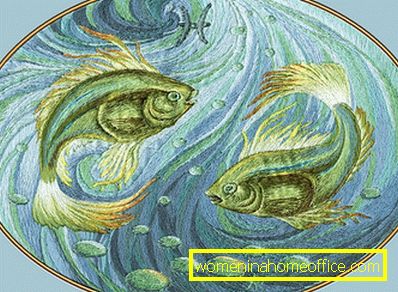Stitching for beginners
Since ancient times, embroidery has been one of the main skills of a woman. Embroidered patterns not only decorated clothes and home textiles, but also carried special symbols, acted as amulets. Nowadays, embroidery is also popular. Enough to see high fashion shows to see how she inspires famous couturiers to create extraordinary collections. Embroidery stitch will help you to create unique things and home accessories with your own hands.
Embroidery technique

There are many embroidery techniques. The most famous are cross-stitch embroidery, chain stitch, and cutwork. Also familiar and smooth. This technique has many subspecies, which differ in the ways of execution and, of course, the final result. The color art surface is very widespread. By the way, in ancient times embroidery by satin was considered in the literal sense of the divine form of needlework. People believed that the gods invented it.
What do you need for embroidery satin stitch? Not very much: fabric, needle, thread and hoop. Matter can be virtually any - cotton, flax, batis are excellent for these purposes. As for the threads, you can use ordinary floss for a start.
The satin stitch technique includes several nuances. One of them - a way to transfer the image to the fabric. So you can apply a freehand drawing with a marker, the ink of which disappears after washing. Many embroiderers use the translation of a drawing over a tracing paper or a carbon copy. In the first case, the tracing paper with the printed pattern needs to be simply ironed onto the fabric with an iron - under the influence of temperature, the pencil will be transferred to the basis for embroidery.
It is important that the needles and hoops are the right size. Needles can be bought at a handicraft shop. They should not be very long - it will be inconvenient to embroider. But their ear, on the contrary, should be elongated. For thick, dense fabric, small-diameter needles should be chosen so that they easily pass through the canvas.
The diameter of the hoop should be equal to the diameter of the embroidery. Allowed and larger. But small hoops for large embroidery are not recommended - creases may remain on the satin-stitched sections, which are likely to spoil the final appearance of the product.
In order to learn how to embroider it is better to use the technique of two-sided smoothing. It is easier than all the others.

Step by step embroidery looks like this: prepare the fabric, select the pattern. Transfer it to fabric through carbon paper or tracing paper. Consider the color scheme of the future embroidery. Draw a fabric with a pattern on the hoop. She should hold tight enough. After that, proceed to embroidery.
The important point - properly secure the thread. Often the satin stitch is embroidered with a double thread. Fix it as follows. From floss floss pull one thread. Fold it in half so that the tips are located on one side. Thread the single thread through the needle. Stretch the thread with the needle from the front side to the inside and back, do not let the loop that came out of the stretched threads “run away”. Pull the needle from the seamy side to the front through this loop. Thread fixed.
Another feature - the thickness of the thread must be adapted to the thickness of the fabric. Dense material can be embroidered stitch threads "Iris", and not floss. Also, when embroidering on thick fabrics, it is better to use a thimble. Of course, it will take you some time to get used to it, but with its help it is much easier to push a needle and thread through the canvas.
It is worth paying attention to how to care for embroidered things. They do not tolerate boiling and coarse washing - no friction. After you have washed the thing embroidered by the satin stitch, you should carefully squeeze it, wrapping it in a terry towel. After this, the product is smoothed out and ironed on the wrong side when wet. Only in this way can you keep the original look of embroidery.
Embroidery is quite simple in design. The main thing - to choose patterns, thread and make a little effort. Different motifs of satin stitching are performed with different stitches. This may be a contour seam forward needle, shadow surface, stalked seam. It is better to think in advance what part of the work you will do with what stitch. This will help to achieve a great end result!